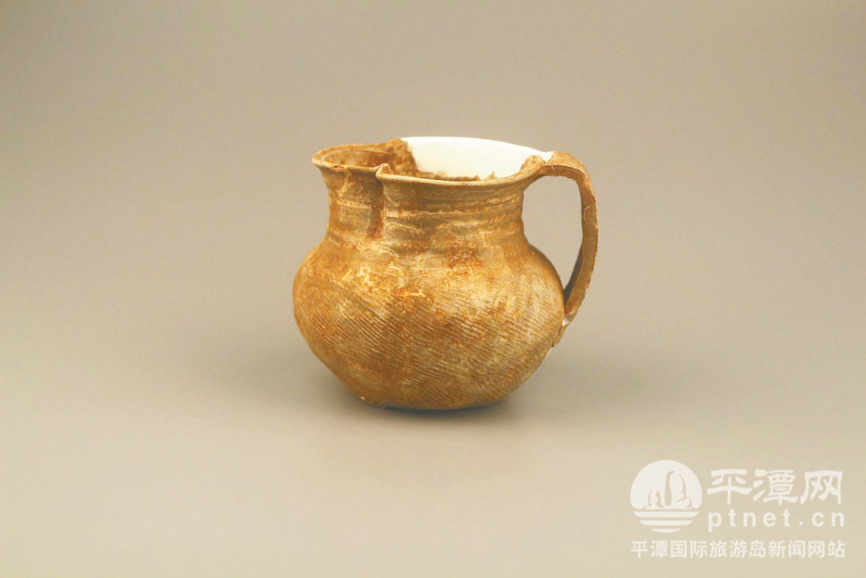Tripod-spouted jar with chiseled single handle: A dialogue between Fujian river and island civilizations
Updated:2025-05-15 | Lin Dan
Tripod-spouted jar with chiseled single handle
Period: Late Neolithic-Bronze Age (4,500-3,500 years ago)
Material: Ceramic
Dimensions: Major axis 11.5 cm, minor axis 11 cm, base 6.5 cm, height 12.2 cm
Characteristics: Gray clay pottery, fine hard texture, regular shape, open mouth, short neck, bulging belly, flat base
The mouth is shaped into a chisel-edged spout; neck features five raised corded ridges.
The body of the vessel is stamped with diagonal stripes, widest at mid-section. A single Shì-chisel (a specialized tool) was applied to the rim and widest part of the body, forming an undecorated broad band.
The base of the vessel is stamped with diagonal stripes. Residual clay fragments from production are visible, demonstrating advanced ceramic craftsmanship during that period.
Artifact Insights:
The Tripod-spouted Jar with Chiseled Band was unearthed in the Pingtan Keqiutou Site.
Typological analysis reveals that this artifact combines the plain sand-tempered pottery tradition of the Huangguashan Culture with the stamped-hardware ceramic technology of the Huangtulun Culture. Its hybrid cultural identity underscores the close interactions between the lower Fujian River region, the islands, and inland region.
Archaeological evidence shows that the artifact was probably introduced to Pingtan through maritime migration from the lower Fujian River during the late Neolithic period. These migrations facilitated not only the transfer of advanced ceramic techniques but also the holistic adoption of cultural systems—including agricultural practices and social organization in the course of population migration.
This artifact exemplifies the material complexity of prehistoric southeast coastal societies. Comparative analysis reveals that Pingtan's culture absorbed ceramic technologies from the Fujian River while retaining distinct island characteristics, embodying a "local foundation + external innovations."
From a broader civilizational perspective, this relic solidifies the southeast coast's role as a "cultural nexus" within China's pluralistic-yet-unified civilizational framework. It provides critical evidence for understanding the emergence of early maritime-oriented cultures and their contributions to East Asia's historical trajectory.

